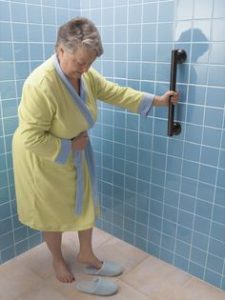
Injuries from falls and car crashes are more common as we age. These injuries can have devastating effects. But these injuries can be prevented so you can stay healthy and independent longer.
More than 1 in 4 older adults report falling each year—this results in about 36 million falls.1 Falls can cause serious injuries such as broken bones or a head or brain injury.2 But falls are not a normal part of aging—they can be prevented.
There are simple steps you can take to keep yourself from falling and to stay healthy and independent longer.
Tell your doctor if you have fallen, if you feel unsteady when standing or walking, or if you are afraid you might fall.
Ask your doctor or pharmacist to review the medicines you take. Some medicines might make you dizzy or sleepy which can increase your risk of falling.
Have an eye doctor check your eyes at least once a year and update your eyeglasses as needed.
Have your doctor check your feet at least once a year and discuss proper footwear to reduce your risk of falling.
Ask your doctor about health conditions like depression, osteoporosis, or hypotension that can increase your risk for falling.
Get rid of trip hazards like throw rugs, and keep floors clutter free.
Brighten your home with extra lighting or brighter light bulbs.
Install grab bars in the bathroom(s)—next to the toilet and inside and outside of your bathtub or shower.
Install handrails on both sides of staircases.
Preventing a Motor Vehicle Crash
Driving helps older adults stay mobile and independent. But the risk of being injured in a traffic crash increases as we age.
As we age, declines in vision and cognitive function (ability to reason and remember), as well as physical changes, might affect our driving abilities.
You can take action to stay safer on the road and stay independent longer.
There are simple steps you can take to stay safe on the road.
Buckle Up Every Time!
Always wear a seat belt as a driver or a passenger. If you are in a crash, wearing a seat belt is one of the most effective ways to reduce your chance of getting injured. It can even save your life.
Drive when conditions are safest.
Drive during daylight and in good weather.
Conditions such as poor weather (like rain or snow) and driving at night increase your chance of a crash.
Never drink and drive.
Alcohol reduces coordination, impairs judgement, and increases the risk of being in a crash.
Before you drive, find the safest route with well-lit streets, intersections with left-turn signals, and easy parking.
Watch your distance.
Leave a large following distance between your car and the car in front of you. You may experience delayed reflexes or slower reaction time as you age.
Don’t drive distracted.
Avoid distractions in your car, such as listening to a loud radio, talking or texting on your phone, and eating.
Get a ride.
Consider alternatives to driving, such as riding with a friend or family member, taking a ride share service, or using public transportation if possible.
